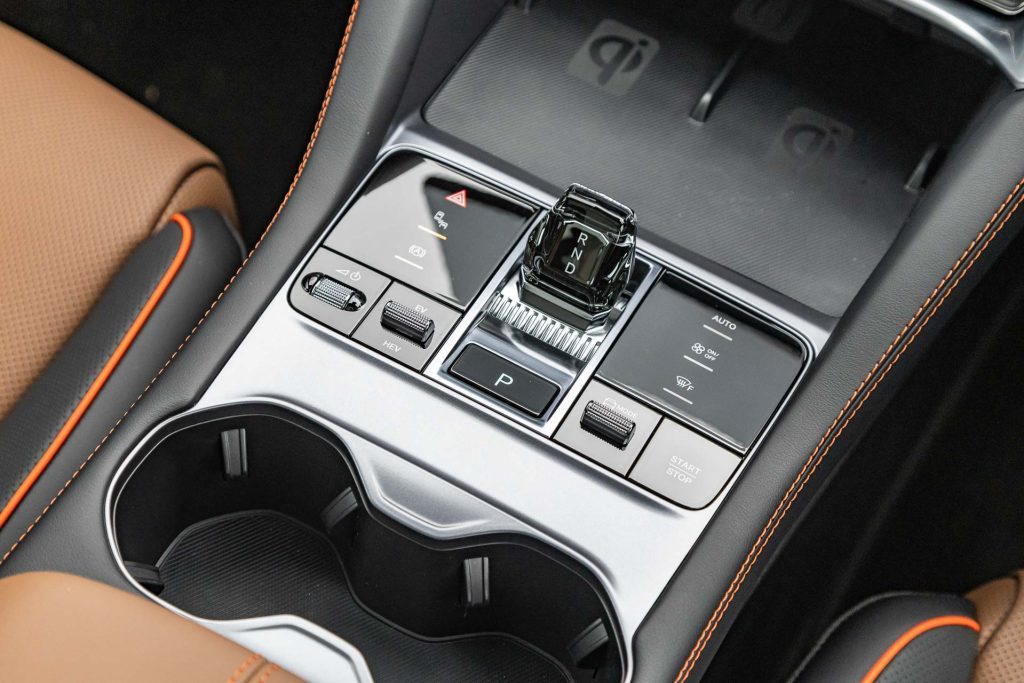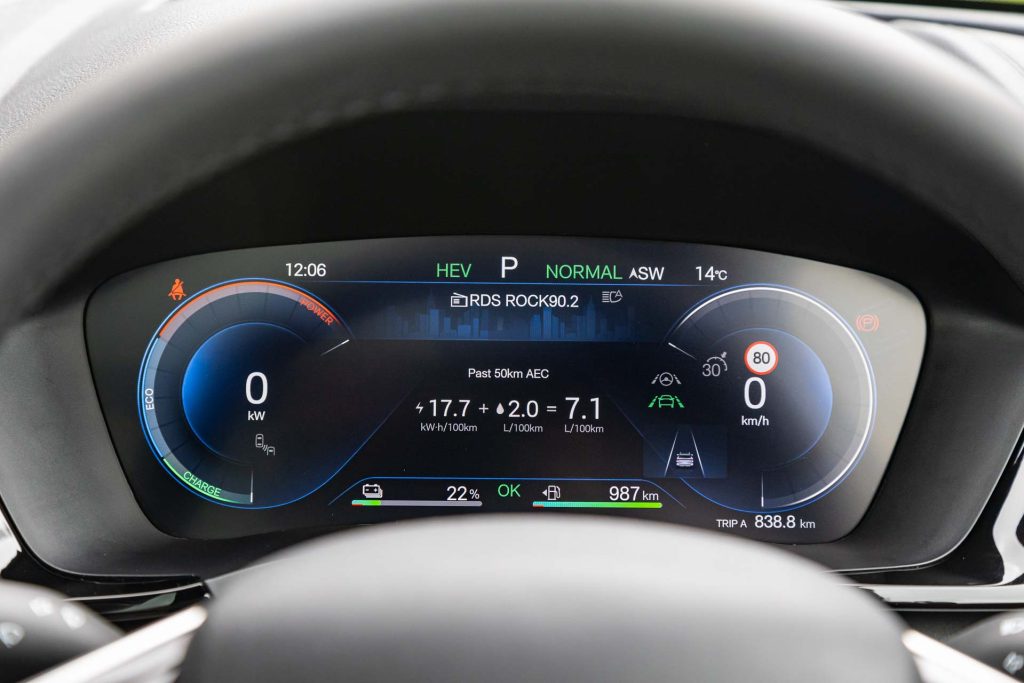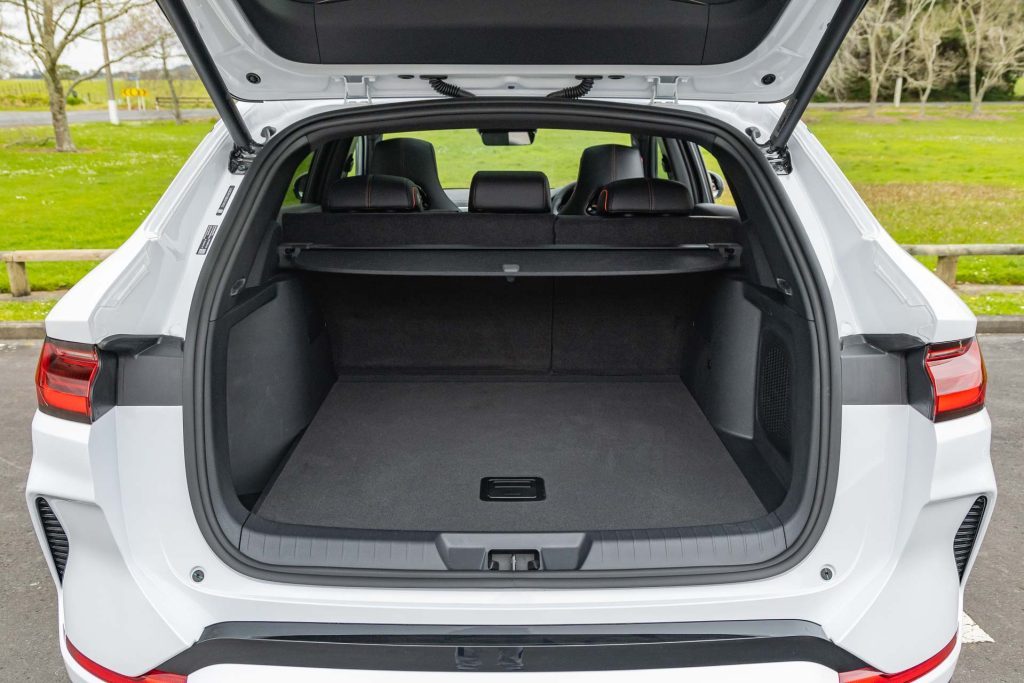2024 BYD Sealion 6 Premium review
Words: Kyle Cassidy | Photos: Isaac Western
The Sealion 6 Premium is BYD’s PHEV model with two electric motors for an increase in output. Is it worth the premium?
While BYD is better known for its EV models like the Atto3, it makes plug-in hybrids too. The Sealion 6, BYD’s bigger SUV offering, is just that.
There’s the $57,990 FWD Sealion 6 Dynamic, which we reviewed a few months back, and this is the $64,990 AWD Premium. That sounds as though it’s the high-spec model, but that’s not the case with BYD.

It runs a loaded-as-standard mantra, the local distributor keen to emphasise that BYD is not a cheap and cheerful brand. The only extra for the Premium is an HUD; the extra outlay gets you a traction motor on the rear axle.
Both BYD Sealion 6 models run a 300Nm electric motor up front, the Premium with a 150kW output, five more than the Dynamic, while it also has a 120kW/250Nm motor on the rear.
Whereas the Dynamic pairs the electrics with a 1.5-litre NA four cylinder, the Premium gets a turbocharged version with more power (96kW/220Nm vs 72kW/122Nm). As for the combined hybrid output, things get a little confusing.

The Dynamic is said to have a max output of 160kW and 300Nm. The Premium has more at 238kW and 550Nm.
But for those adding the figures up, you’ll see the Dynamic makes more than its motor output while the Premium makes less.
They both get the same 18.3kWh battery pack, which delivers a potential EV range of 81km for the Premium, 11 less than the Dynamic.

PHEV modes
In terms of operation, with a sufficiently charged battery, Sealion 6 drives like an EV; the engine off, the power and torque delivered smoothly and quietly by way of the electric motors.
Once the battery state of charge (SOC) gets to about 25 per cent, it then switches to HEV mode. This has the 1.5-litre engine primarily driving the generator to keep the battery charged.

And so it still drives like it’s in EV mode, the torque flowing quickly and uninterrupted as there are no gears to cycle through. You can hear the engine churning away; generally it’s pretty quiet but it’s more audible under acceleration.
Keeping an eye on the energy flow diagram, it seems that it’s only at motorway-type cruising speeds that the engine feeds any tractive power to the front wheels.

Faster but?
BYD says the Premium can hit 100 in 5.9sec, some 2.5 sec faster than the Dynamic. However, we couldn’t meet the mark, our best being 7.5sec.
We thought it might have been down to the low SOC at the time. So we tried again after a quick charge. With battery health at 60 per cent, we still recorded the same time.
This doesn’t charge off the mark – the power builds progressively – and it’s quick in the 30 to 80km/h zone but then the thrust starts to fade.

What about economy?
At pick up, the SOC was at 85 per cent, with an indicated EV range of 65km. We managed 50km before it switched into HEV, as half of those were motorway miles.
There wasn’t a charge cable to fill the battery at home, so we trucked about in HEV mode for a few days. BYD doesn’t do a regular trip computer to relay consumption.
There’s a readout that blends the HEV and EV figures for an equivalent L/100km number that doesn’t quite compute. Another tracks your progress over the past 50km of travel.

This gives you a rough idea, but not an overall picture. There is yet another that tracks litres of fuel consumed in HEV mode. And given we noted the odo when it changed modes, we got an idea of fuel consumption.
Over 186km it consumed 14L of gas to return 7.5L/100km. BYD gives two fuel consumption numbers; 1.4L/100km and 5.8L/100km, the latter for when the Sealion 6 is in HEV mode.
These are ADR/NEDC figures, derived from a test that isn’t quite as rigorous as the WLTP regime. So, as we state often, the best economy comes from plugging in your PHEV as often as possible.

This way you’ll reduce the double hit of RUCs and the tax at the pump. One handy trip computer feature is an odo that can cycle through total distance (2746km in this case) but also mileage in EV/engine off mode (1098km) and HEV (1648km).
This is a PHEV that will accept DC charge. We hooked up to a 50kW unit, much to the dismay of the MG ZS owner who pulled in just after us.
EV owners hate it when PHEVs use a DC pump. The Sealion 6 reached a peak charge of 18.4kW, taking 21 mins to lift the SOC from 21-52 per cent.
A full charge would have taken an hour and a half. That cost $5 and gave us an estimated 31km of EV range. And this is why it’s best to charge your PHEV at home, saving time and money.

Premium in nature?
BYD delivers on the quality front. The cabin is liberally coated with soft touch surfaces, and the finishing impresses. It’s also practical with good storage spaces, two charge pads and sound ergos.
Seat comfort is tops, adjustment aplenty. And while the trim colour combination of black and brown coverings, highlighted with orangey red stitching and piping, doesn’t sound like a visual harmony, it kind of works here. The imitation leather almost had us fooled too.
BYD’s mammoth twirly whirly touch screen is in full control, helped by the Hi BYD voice commands (and she’s pretty good at deciphering the Kiwi twang).

The touchscreen is rather intuitive and quick acting. The cabin isn’t bereft of buttons, and it has useful controllers like an actual gear lever and proper indicator and wiper stalks.
This is family friendly with plentiful rear seat space, the bench comfy and the flat floor gives the occasional middle passenger reasonable foot room.
There’s a full-length panoramic roof but it doesn’t impinge on headroom. For the size of the machine, the boot is not huge, though adequate at a quoted 425L.

Folding the rear seats makes a nearly flat floor for lugging the extras. There’s no spare wheel of course. This AWD model can tow up to 1300kg braked, 550kg more than the FWD Dynamic.
There are more than a few safety items listed on the spec sheet, but mercifully the warning chimes are few and muted.
The speed minder gives one little beep, which is good as the camera plucks any old number off a sign and decides that’s the speed limit (it gets confused by route numbers on road signs).

The lane keeping will give the wheel a gentle tug but it’s not enough to get antsy about. BYD’s excellent surround camera comes online quickly when parking, or via the steering wheel mounted button.
Drives okay?
This has a comfort plus ethos. The steering is very light, the connection to the front wheels minimal so we thought we’d try the Sport mode assistance, only to find we were in Sport mode.
On the go it reminds of a Citroen with a supple ride quality but not one that crashes over the bumps. This rides out most road regularities well. It’s quiet too. It rolls into the bends and it’s best not to push it along too hard; that just gets the rubber squealing.

The steering is in need of some resistance in the bends, while the brake pedal lacks sensitivity. There are two settings for the motor regen; mild and minimal.
Worth the premium?
Given the extra output doesn’t translate to added performance, and that the Sealion 6 is more of a comfort-oriented, refined SUV, save the money and opt for the Dynamic.

What’s worth noting is that at $58k, it’s not much more expensive than most HEV SUVs (but better equipped), while being cheaper than the PHEV competition.
| Model | BYD Sealion 6 Premium |
| Price | $64,990 |
| Engine | 1.5L, IL4, T |
| ICE Power | 96kW/220Nm |
| Electric Power | 150kW/300Nm + 120kW/250Nm |
| Combined Output | 238kW/550Nm |
| Drivetrain | Single-speed auto, e-AWD |
| Turning circle | 11m (3.1 turns) |
| Fuel Use | 1.4 – 5.8L/100km |
| C02 Output | 32g/km |
| 0-100km/h | 7.52 sec |
| Tyre Size | f/r-235/50/R19 |
| Fuel Capacity | 60L |
| Stability systems | ABS, ESP |
| Safety | AEB, ACC, BSM, LDW, RCTA, ALK, AHB |
| Luggage Capacity | 435-1440L |
| Tow rating | 750kg (1300kg braked) |
| Service intervals | 12 months/15,000km |
| Warranty | 6 years/150,000km |
| ANCAP rating | 5 Stars (2024) |
| Weight | 2100kg (claimed) |
This article first appeared in the October 2024 issue of NZ Autocar Magazine.





